Introduction
User stories and acceptance criteria play a vital role in software development, guiding teams towards delivering value to end-users. These tools help capture user requirements, internalize the user's perspective, and ensure that software solutions resonate deeply with the target audience. User stories, encompassing use cases, craft pathways to achieving user goals, while acceptance criteria provide clear conditions for when a user story is complete.
By embracing these practices, development teams can communicate complex requirements effectively and create user-centric designs. This article explores the structure and benefits of user stories, the role of acceptance criteria, best practices for writing them, and their integration into agile processes. It also highlights examples of user stories and acceptance criteria, common pitfalls to avoid, and the importance of collaboration and communication in their development.
By understanding and implementing these concepts, software development teams can optimize their processes and deliver high-quality software that exceeds user expectations.
Understanding User Stories
User stories embody the essence of user requirements and expectations, capturing the core needs that software must address. They are not just a tool for communication but also serve as a lighthouse, guiding business analysts and programmers towards the ultimate goal of delivering value to end-users. Understanding user stories allows development teams to internalize the user's perspective, leading to software solutions that resonate more deeply with their target audience. At the heart of user stories lie use cases, a robust mechanism as defined by the OMG UML specification. According to this framework, use cases help to elucidate the functionalities systems are intended to perform, emphasizing actors, use cases, and the system under consideration. Each use case narrative crafts a pathway to achieving the primary actor's goals, including main scenarios for success and alternatives for potential obstacles. These narratives are indispensable in a world where software development is ever-evolving, offering a proven solution against the backdrop of new technologies and methodologies. As such, they enable analysts and developers to communicate complex requirements in a straightforward manner, ensuring that even the most innovative projects remain grounded in user-centric design. The software development industry's dynamic landscape, with its focus on novel and customized solutions, underscores the importance of use cases. Ivar Jacobson and Alistair Cockburn, pioneers in this field, advocate for their continued relevance, noting that they address a myriad of challenges with simplicity and clarity. Embracing agile methodologies further complements this approach, as it promotes adaptability and transparency throughout the project management process. This iterative approach to development, characterized by cycles of planning, execution, and evaluation, ensures that user stories and use cases remain at the forefront, continually shaping the software to better meet user needs.
The Structure of User Stories
The construction of user stories is akin to the collaborative effort of an architect, engineers, and homeowner when envisioning a house. Each user story is a blueprint for a feature, reflecting the needs and goals of the user. At the heart of every user story lies three core elements: the persona, the action, and the desired outcome. The persona represents the 'actor' or user role, the action is akin to the 'behavior' expected from the software, and the outcome is the 'goal' or benefit the user seeks to achieve.
When crafting a user story, imagine documenting a use case where the system's requirements are captured in a format that clarifies what the system must do. This involves specifying actors, the use cases themselves, and the subjects to which they apply. Moreover, this approach aligns with Behavior-Driven Development (BDD), which focuses on the expected behavior from a user's perspective, using scenarios written collaboratively.
The narrative of a user story unfolds through its main scenario, which details the actions leading to the goal in a straightforward manner. Yet, it's critical to also consider alternative paths and potential obstacles, naming all the things that can go wrong and how an alternate route to success might emerge. These scenarios are not just theoretical exercises; they provide a robust way to communicate requirements, reflecting a deep understanding of the user’s context and situation.
For example, instead of merely stating a user's role, a 'Job Story' hones in on the specific situation, the user's motivation, and the desired outcome. The format is simple but powerful: 'When [situation], I want to [motivation/action], so I can [outcome].' This shift towards a more situation-centered perspective helps capture the essence of the user's needs in the context where they arise.
The process of defining user stories should be intuitive, grounded in evidence and real user experiences. Struggling to articulate a user story often signals a gap in understanding rather than an issue with the format itself. User stories serve as a vessel for conveying current knowledge, and they should remain solution-agnostic to allow for the discovery of the best possible outcomes for the user.
In the evolving landscape of software development, it is easy to chase after new tools and technologies, but time-tested practices like use cases endure due to their simplicity and effectiveness in solving complex problems. They remind us that at the core of every technological solution are the human actors and their goals, which must remain the focal point of our development efforts.
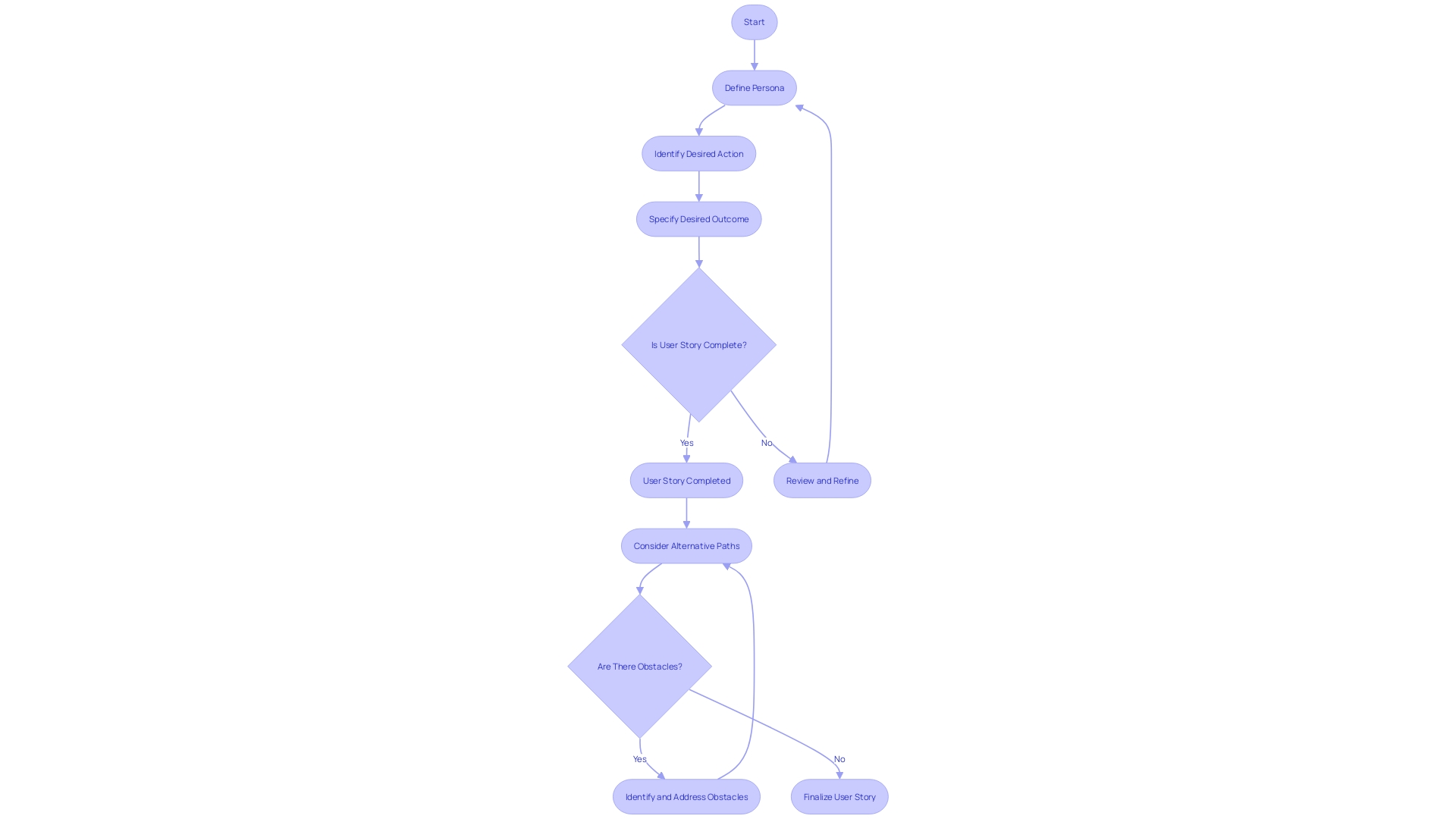
The Role of Acceptance Criteria
Acceptance criteria are the linchpin for determining when a user story in software development is complete and meets the stakeholder's needs. They encapsulate the conditions that a software feature must satisfy to be considered finished and acceptable. M&T Bank's initiative to set Clean Code standards across its development teams underscores the criticality of having clear, measurable, and testable requirements—including acceptance criteria—to maintain software quality and adhere to stringent security protocols in the banking industry.
In the context of Agile methodology, where rapid iterations and close collaboration between developers and business stakeholders are key, well-defined acceptance criteria become even more significant. Agile encourages adapting to changes even in the late stages of development, making it essential to have a solid foundation of acceptance criteria to guide these adaptations. This is especially crucial given the challenges faced by Agile in larger organizations, as highlighted in the recent 'State of Agile' survey.
Furthermore, the importance of acceptance criteria is mirrored in the concept of use cases, which are pivotal in capturing the requirements of systems. As the UML specification elaborates, a use case outlines the goals an actor aims to achieve with a system, detailing the main scenario of interactions and alternative paths, including potential failures. This directly ties into the essence of acceptance criteria, which should clearly delineate the expected outcomes and edge cases for a feature.
The proverb quoted by Ellen Ullman, 'We build our computers the way we build our cities—over time, without a plan, on top of ruins,' serves as a cautionary reminder of the repercussions of not having a structured approach to defining requirements. Acceptance criteria are a critical tool to avoid such pitfalls by providing a blueprint for what the software should achieve, thus enhancing the reliability and maintainability of the final product.
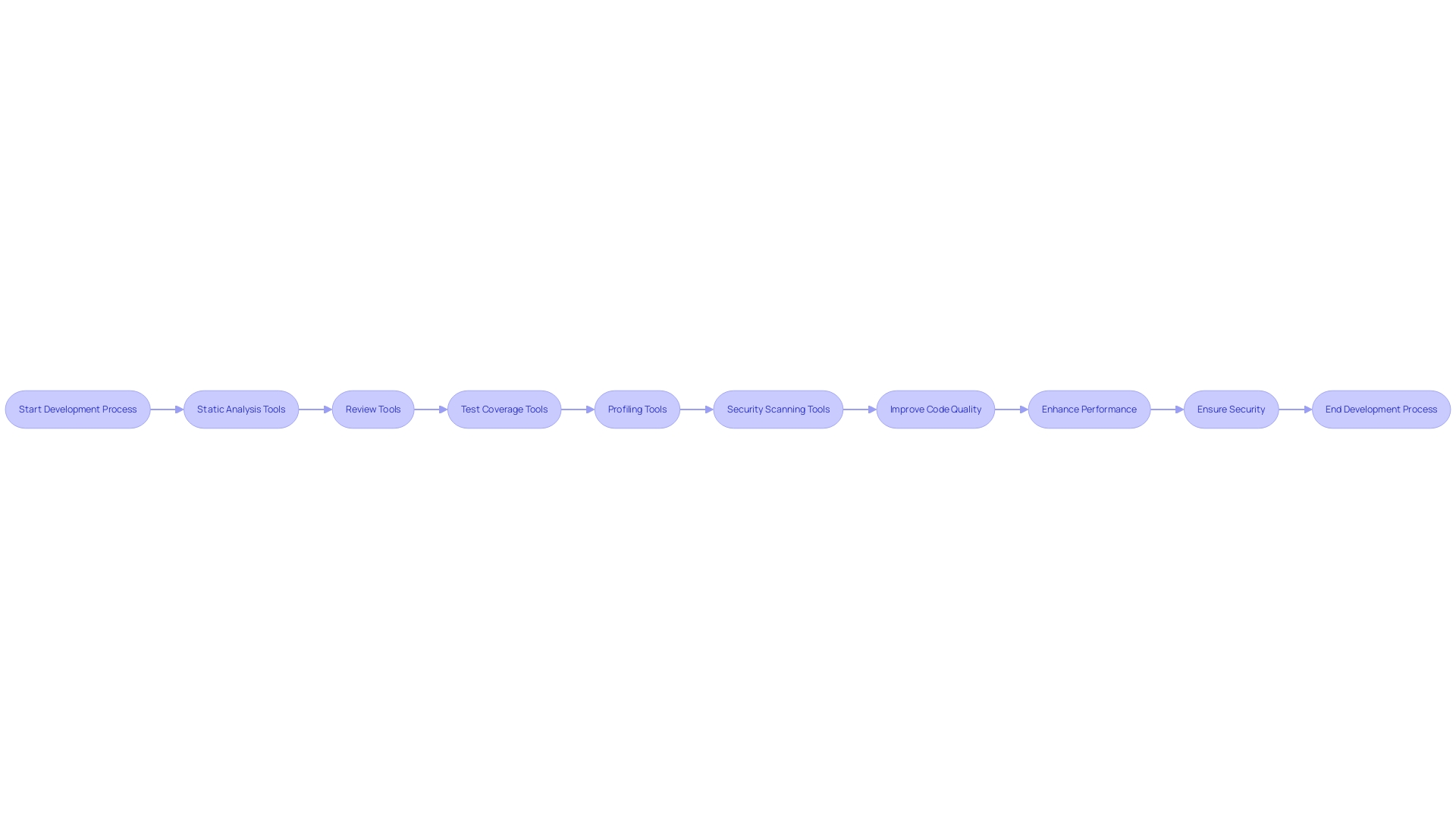
Defining Acceptance Criteria
Effective collaboration between business analysts and programmers is crucial when defining acceptance criteria, ensuring they are clear, measurable, and cater to user needs. By meticulously documenting critical use cases, teams can illustrate the system's requirements, focusing on essential concepts such as actors, use cases, and the system under consideration. For instance, M&T Bank leveraged use cases to set Clean Code standards amidst the digital transformation, ensuring their software met quality and compliance benchmarks.
Fostering this level of detail is not just about maintaining standards; it's about safeguarding against significant risks, such as security breaches and reputational damage. As outlined by the OMG UML specification, each use case should clearly represent the system’s goal from the actor's perspective, including straightforward and alternative scenarios. This comprehensive approach facilitates a robust foundation for acceptance criteria that resonate with user expectations.
In light of the evolving landscape of software methodologies, it's also important to consider different SDLC models and Agile principles, which advocate for rapid iterations and continuous collaboration. These modern frameworks underline the necessity for dynamic and adaptable acceptance criteria that can accommodate changes even in the later stages of development.
Moreover, the science of measurement in software engineering, as discussed by Jones Yeboah, emphasizes the importance of rigorous tools and methodologies to detect errors and enhance software quality. This research not only aids developers but also guides business analysts in understanding how to frame acceptance criteria within the context of software metrology.
Therefore, the process of defining acceptance criteria is a synthesis of best practices, theoretical concepts, and industry standards aimed at delivering software that not only meets but exceeds user expectations. The use of structured test cases, as an integral part of this process, provides a systematic approach to validate functionality and performance, ensuring the software's reliability and effectiveness.
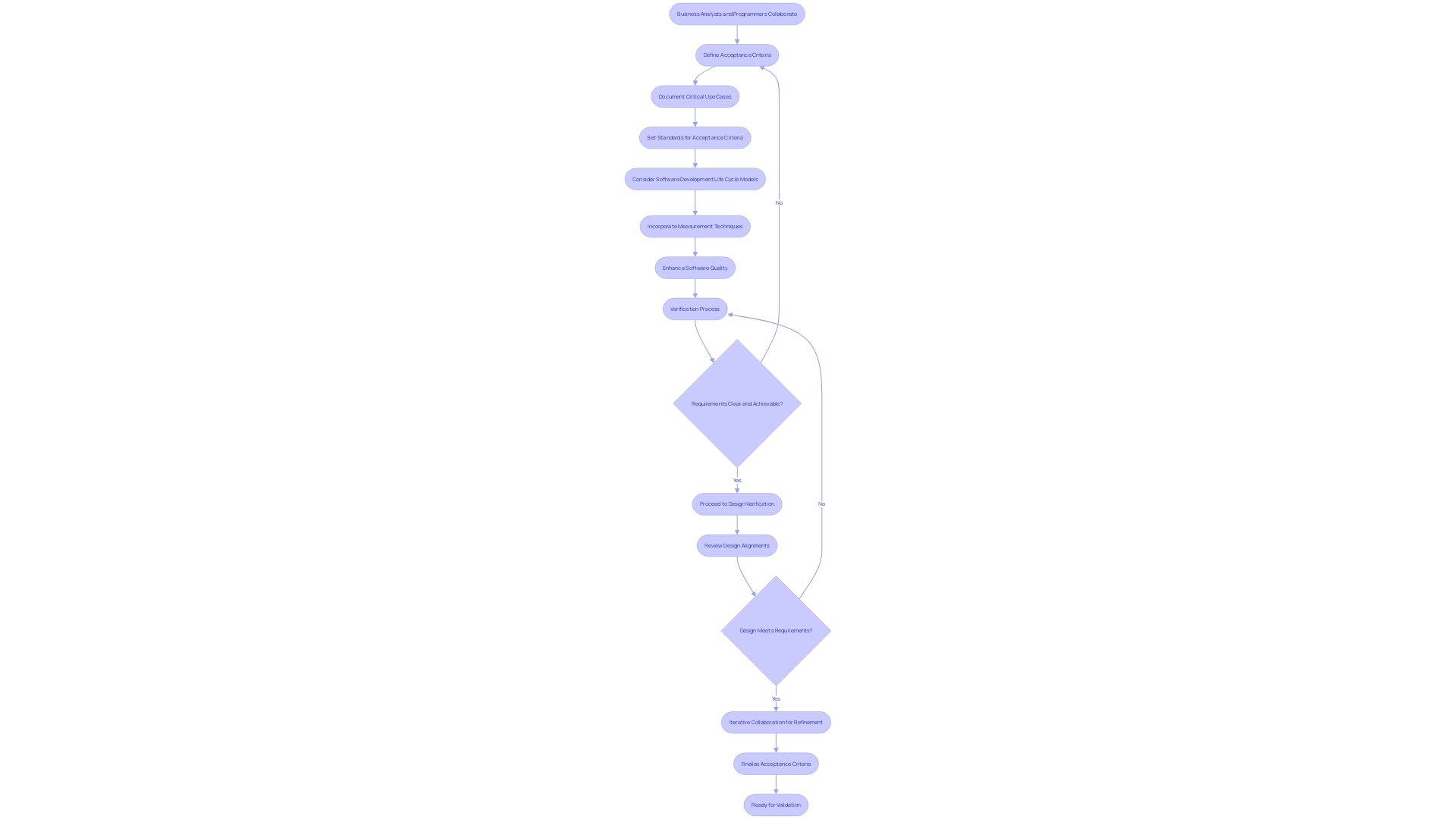
Benefits of Using Acceptance Criteria
Acceptance criteria serve as a cornerstone in software development, providing a clear and comprehensive set of conditions that software must meet before it is accepted by a user, customer, or system. By meticulously documenting critical use cases, as defined by the OMG UML specification, acceptance criteria ensure developers and stakeholders share a clear understanding of what the system is intended to do. This is not just about defining the actions and goals of the system but also about outlining the alternative paths and potential issues that may arise.
M&T Bank's initiative to uphold stringent Clean Code standards exemplifies the importance of such criteria in the banking industry, where the cost of failure is high. Acceptance criteria function as a preventive measure, safeguarding against costly errors that might lead to serious financial losses and reputational damage. They facilitate early detection of issues, making it more cost-effective to address them during the development phase rather than after deployment.
The practice of Continuous Integration (CI) is an excellent example of how acceptance criteria contribute to a more efficient and collaborative development process. By integrating code changes regularly and automatically into a shared repository, CI leverages acceptance criteria to detect integration issues swiftly, thereby enhancing the quality and reliability of the software being developed.
Statistics from AI pair-programming tools like GitHub Copilot demonstrate that well-defined acceptance criteria can significantly boost developer productivity across all skill levels. These AI systems predict code completions, allowing for a smoother and more efficient coding experience. This is reflected in improved product quality, reduced cognitive load, and higher levels of enjoyment and learning for developers.
Such a strategic approach to defining acceptance criteria undeniably leads to software that not only aligns with technical specifications but also resonates with user needs and expectations. In fact, decision-makers often exhibit a degree of skepticism towards new methodologies, but the tangible benefits of acceptance criteria, as highlighted by industry leaders and innovators, are compelling enough to sway even the most cautious among them.
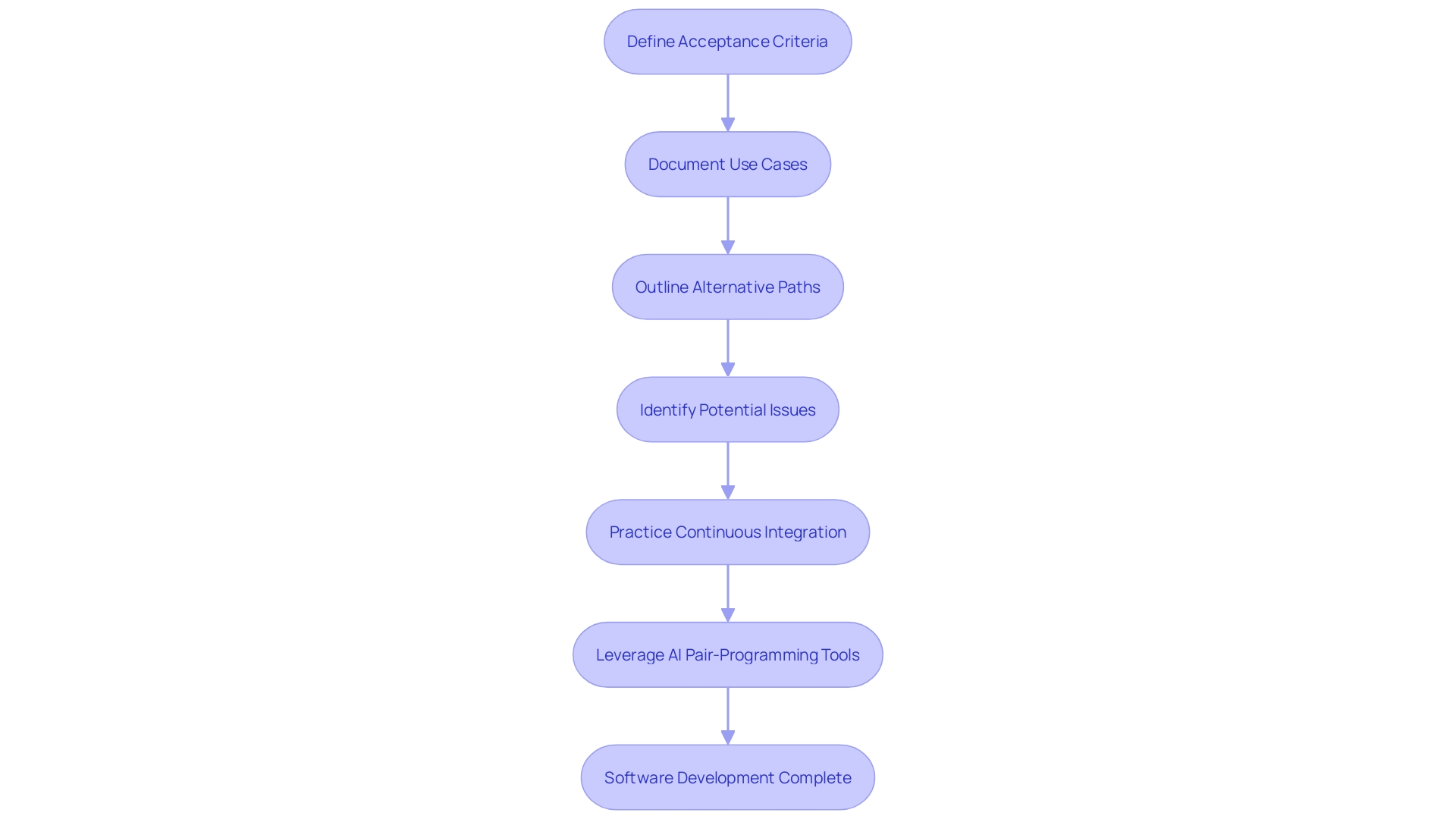
Examples of User Stories and Acceptance Criteria
Understanding the intricate dance between user stories and acceptance criteria is pivotal for any software development project. User stories serve as a narrative to describe features from an end-user perspective, while acceptance criteria outline the conditions under which a user story is fulfilled. In the realm of effective requirement capturing, use cases emerge as a critical tool, defining the various interactions between actors and the system at hand. According to the Object Management Group's Unified Modeling Language specification, use cases describe what a system is intended to do, focusing on actors, the use cases themselves, and the system subjects.
In order to demystify the practical application of these concepts, consider the role of a primary actor who aims to accomplish a specific goal through the system. The main scenario delineates a straightforward pathway to achieve this goal, while also acknowledging alternative conditions and potential deviations from the expected flow. These use cases are not mere artifacts of documentation; they encapsulate the essence of the system's purpose and offer a blueprint for its functionality.
The relevance of well-defined requirements cannot be overstated, as they are the backbone of user satisfaction and system efficacy. A requirement is a concise, testable, and measurable statement that delineates a system characteristic or describes a capability it must possess to meet its objectives. Each requirement originates from a real-world problem, posting software as a solution. The consequences of inadequately defined requirements range from misaligned expectations to the delivery of a product that fails to resolve the initial problem effectively.
Reflecting on the evolution of software development, it's evident that the industry has occasionally overlooked time-tested solutions in its pursuit of innovation. However, use cases remain a cornerstone for effectively conveying requirements, as evidenced by the insights of Ivar Jacobson and Alistair Cockburn, who have significantly contributed to the domain. Their advocacy underscores the simplicity and problem-solving potential of use cases, which continue to offer robust solutions to recurring challenges in software development.
As the software landscape rapidly evolves, with new tools and technologies constantly emerging, it's crucial to remember that the core of development hinges on understanding and meeting user needs. It's a reminder that while tools like machine translation services expand the accessibility of software across languages, the essence of software development remains grounded in its ability to solve human-centric problems.
Best Practices for Writing Acceptance Criteria
Defining clear and effective acceptance criteria is essential for guiding development teams and ensuring that software meets the desired specifications. Use cases play a crucial role in this process by providing a descriptive narrative that specifies the goals of actors interacting with a system. By focusing on the actors, goals, and scenarios, teams can create acceptance criteria that are not only testable but also resonant with the real-world application of the software.
In behavior-driven development (BDD), the formulation of scenarios using the BRIEF framework—Business language, Real data, Intention revealing, and Essential features—ensures that acceptance criteria remain focused and aligned with business objectives. By utilizing Gherkin, a dedicated language for writing test cases in BDD, developers and analysts can articulate these criteria in terms that are understandable to all stakeholders.
Test cases, the backbone of software testing, are meticulously crafted to verify the functionality and performance of a software application. They consist of a unique identifier, a summary of the test's purpose, prerequisites, steps to be taken, and the expected outcomes. These structured instructions are critical for systematically assessing different aspects of software behavior.
An analysis of software development practices reveals that 80% of professionals consider testing to be integral to their projects. Moreover, 46% use test case design as part of their process, highlighting the importance of well-defined criteria in the development lifecycle. As the industry evolves with technologies like AI and methodologies like Agile, the role of acceptance criteria and test cases continues to be pivotal in achieving software that not only meets technical specifications but also delivers value to users.

Using the INVEST Model for Effective Acceptance Criteria
User Acceptance Testing (UAT) and Quality Assurance (QA) processes are critical components in the development and deployment of software systems. The INVEST model is a practical tool for ensuring that user stories and acceptance criteria align with these processes to achieve quality outcomes. The acronym INVEST stands for Independent, Negotiable, Valuable, Estimable, Small, and Testable—each of these attributes contributes to the clarity and effectiveness of user stories.
-
Independent: User stories should be self-contained, with no inherent dependency on another story. This independence facilitates flexible planning and avoids complex interdependencies that can lead to project delays. It mirrors the need for software systems to handle distinct use cases effectively, as demonstrated by M&T Bank's approach to maintaining a secure and compliant digital banking environment.
-
Negotiable: A good user story is not a contract but a starting point for discussion. Development teams should have the freedom to explore diverse solutions during the exploration phase, as they iterate towards a robust final product during the exploitation phase.
-
Valuable: Each user story must deliver value to the end-users. For example, in the banking industry, where sensitive data is at stake, user stories related to security features carry high value, as they help prevent financial losses and reputational damage.
-
Estimable: Teams should be able to estimate the effort needed to implement a user story. This estimation is crucial for planning and resource allocation, as seen in research-oriented companies that must balance strategic tech debt with project viability.
-
Small: Breaking down stories into manageable sizes ensures that they can be completed within a single iteration and tested thoroughly, similar to how M&T Bank sets Clean Code standards to support software maintainability.
-
Testable: A user story must provide clear acceptance criteria, so that testers can verify the functionality works as intended. This is akin to documenting critical use cases with specified actors, goals, and scenarios, ensuring that the system meets its requirements.
These principles are not just theoretical; they're actively applied across various software and systems industries, from avionics to social networks, as part of a daily production routine. By adhering to the INVEST model, organizations can better manage the balance between rapid technological adoption and the high quality standards required for successful software delivery.
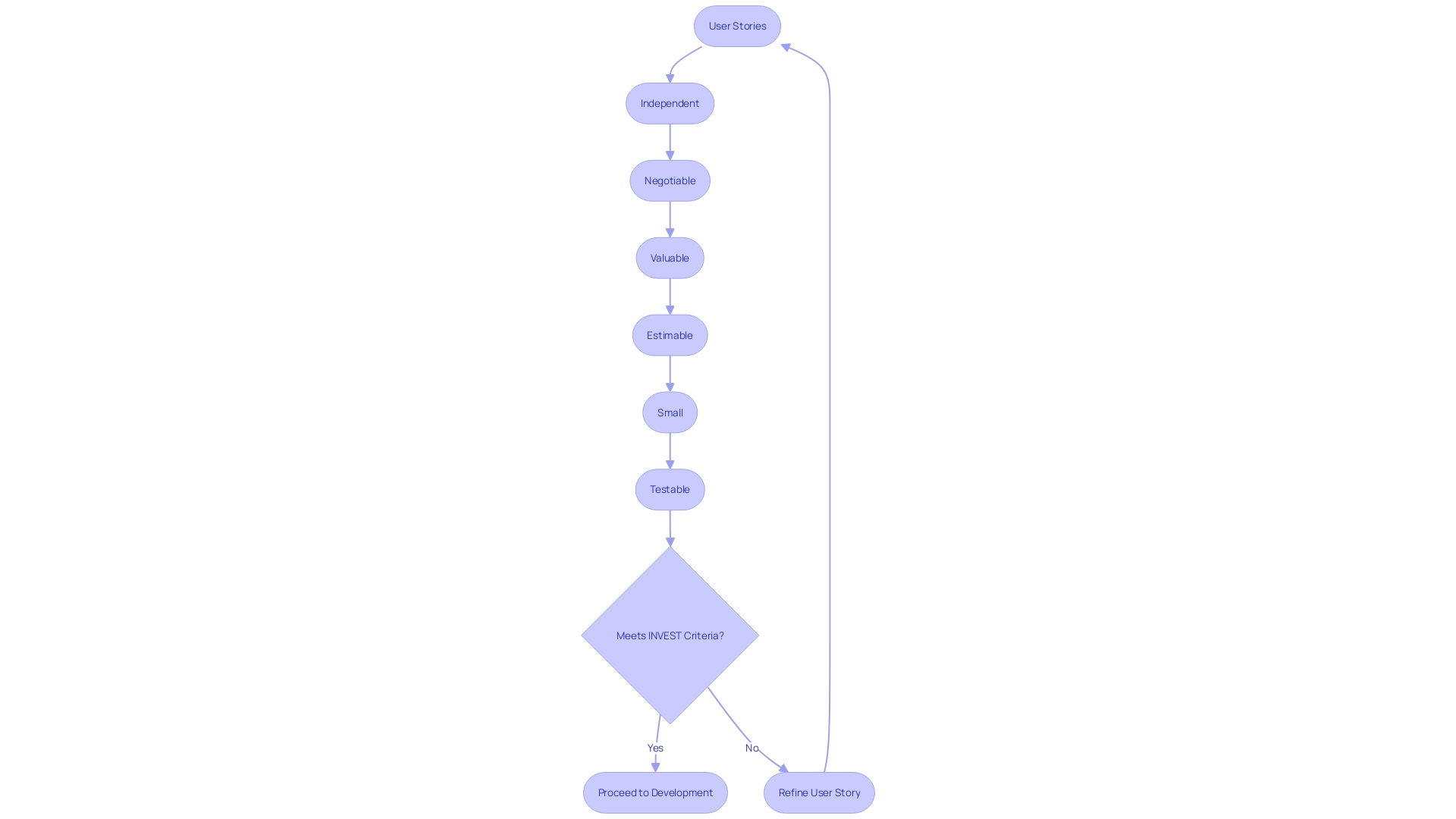
Common Pitfalls and How to Avoid Them
To streamline software development and enhance quality assurance, documenting critical use cases for products and services is essential. Use cases are instrumental in defining the requirements of systems, pinpointing what they are designed to achieve. At the core of use cases lie key concepts such as Actors, UseCases, and subjects. This framework helps in clearly identifying the system under consideration and the objectives of various actors within.
Comprehension of use cases is further enriched by understanding the intricacies of test cases, which act as the backbone of software testing. Test cases are methodically developed to evaluate the functionality, reliability, and quality of software applications. They encompass a sequence of actions, inputs, conditions, and expected results that scrutinize the software's behavior in a systematic manner.
The main scenario of a use case delineates a clear path to achieve the primary actor's goal, while alternative conditions account for potential deviations or issues that may arise. This dual approach ensures that both the standard and edge cases are considered, enhancing the robustness of the software.
The significance of use cases and test cases is highlighted by industry experts like Ivar Jacobson and Alistair Cockburn, who emphasize their value in addressing perennial challenges in software development. They advocate for a concise and robust system to communicate requirements, responding to the needs of developers, analysts, and test specialists seeking solutions to shortcomings in their current methodologies.
In the ever-evolving landscape of software development, it's crucial to acknowledge the effectiveness of well-established practices like use cases and test cases. These tools continue to offer a clear and straightforward way to document requirements and verify functionality, contributing to the success of software projects.
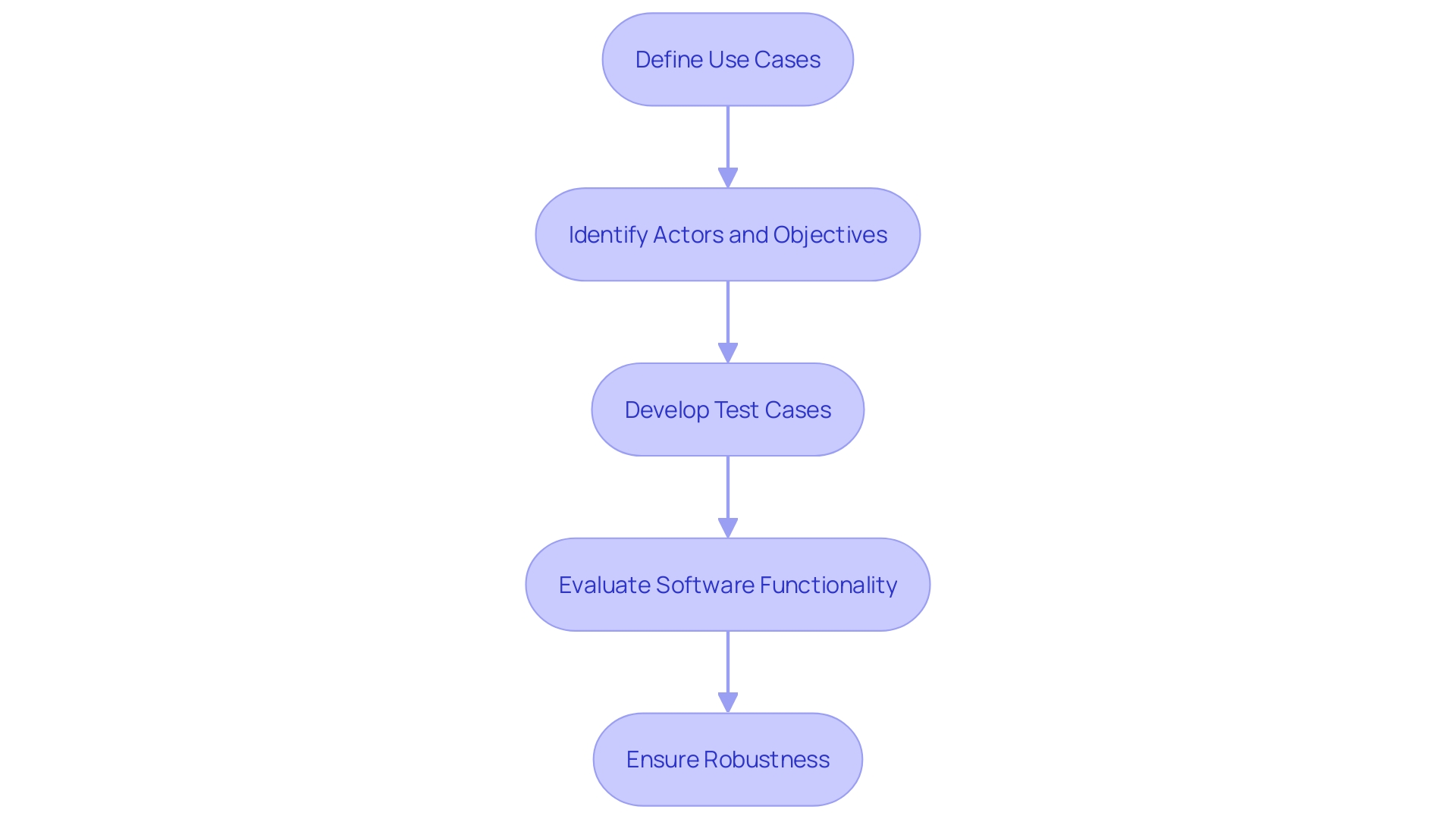
Collaboration and Communication in Acceptance Criteria
The synergy of business analysts and programmers in developing effective acceptance criteria is a linchpin for project success. A case in point is the experience of an on-premise product with a significant history and technical debt. By engaging in collaborative programming and adopting modern methodologies like Monte Carlo Simulations for release planning, teams can navigate the complexities of infrastructure-critical software.
Documentation is often the unsung hero of these collaborative efforts, serving as a reference point to ensure consistency and clarity across teams. A stark example was a situation at Simmons Research, where the sudden departure of a key team member could have been disastrous had it not been for comprehensive documentation that kept the project on track.
Agile methodologies, with their emphasis on rapid iterations and embracing change, have revolutionized the way developers and business analysts work together. It's a culture where 'working software is the primary measure of progress,' fostering a mindset that values continuous integration and delivery. TBC Bank's agile transformation exemplifies this, showing how reducing organizational complexity and technical debt can pave the way for international expansion and digital transformation.
Collaboration between developers and testers is paramount, as it enhances software quality and reliability, boosts team productivity, and supports CI/CD pipelines. Despite the benefits, barriers can arise, such as siloed departments that hinder teamwork. Breaking down these barriers requires a shared 'operating system'—a set of practices and cultural norms that guide collaborative efforts and encourage continuous improvement.
The benefits of such a culture are clear, as one quote from the field states: 'Fostering a culture of quality and collaboration among developers and testers has innumerable benefits and is not negotiable.' The aim is to create an environment where knowledge, skills, and feedback are shared freely, leading to software that meets user expectations and stands up to the demands of a competitive market.
In the end, statistics from continuous integration studies underscore the causal relationship between collaborative practices and software quality. By integrating code frequently and sharing project knowledge, organizations see a marked reduction in issue reports and an improvement in quality assurance. The journey of collaboration is not without its challenges, but the rewards are a testament to its value in the realm of software development.
Integrating Acceptance Criteria into Agile Processes
Agile methodologies are centered around the concept of delivering value rapidly and adapting to feedback throughout the development cycle. A crucial aspect of this adaptive process is the establishment of clear acceptance criteria, which serve as the definitive requirements that software must meet to be considered complete. These criteria are essential for aligning the iterative development process with customer expectations and ensuring that each increment of functionality delivered truly satisfies the intended use cases.
To illustrate, let's consider the practical application of use cases in defining acceptance criteria. Use cases provide a structured way to document the functional requirements of a system by describing the interactions between users (actors) and the system itself to achieve specific goals. As defined by the OMG UML specification, use cases detail the main scenarios and alternative conditions, providing a comprehensive blueprint for what the system is supposed to do. By incorporating use cases into the agile framework, teams can create targeted acceptance criteria that reflect the real-world application of the software, thus facilitating a more efficient and effective development process.
Historically, the shift to agile methodologies arose from the need to address rapidly changing customer requirements, particularly with the advent of personal computing in the late 1970s. Agile testing, with its emphasis on early and continuous testing, collaboration, and automated testing, seeks to quickly identify and address defects to deliver high-quality software that meets these dynamic customer needs. The agile approach stands in stark contrast to traditional methodologies like the Waterfall model, which often led to longer development cycles and challenges in accommodating late-stage changes.
In the current landscape, where industries such as banking face stringent security and regulatory demands, the adoption of agile practices has become even more critical. Banks like M&T, with its rich history and innovative leadership, have recognized the importance of establishing clean code standards and integrating agile testing to maintain software performance and compliance. This approach helps mitigate the risks of financial losses, security breaches, and reputational damage that can result from software issues.
Moreover, the tech industry continues to evolve, dealing with challenges like developer burnout, shifting work environments, and the emergence of AI. Despite these challenges, agile methodologies remain a favored approach due to their adaptability and focus on sustainable work places that prevent burnout and boreout. This is evidenced by the prevalence of agile frameworks that visualize work through Product Backlog Items, which are tackled by developer teams in a manner that promotes continuous integration and software quality.
In conclusion, the integration of acceptance criteria derived from well-documented use cases into agile processes is not only a strategic move for aligning development with customer expectations but also a testament to the enduring relevance of agile principles in a rapidly changing technological landscape. As agile methodologies continue to address the evolving needs of the software development industry, they exemplify a commitment to delivering working software that remains the primary measure of progress.
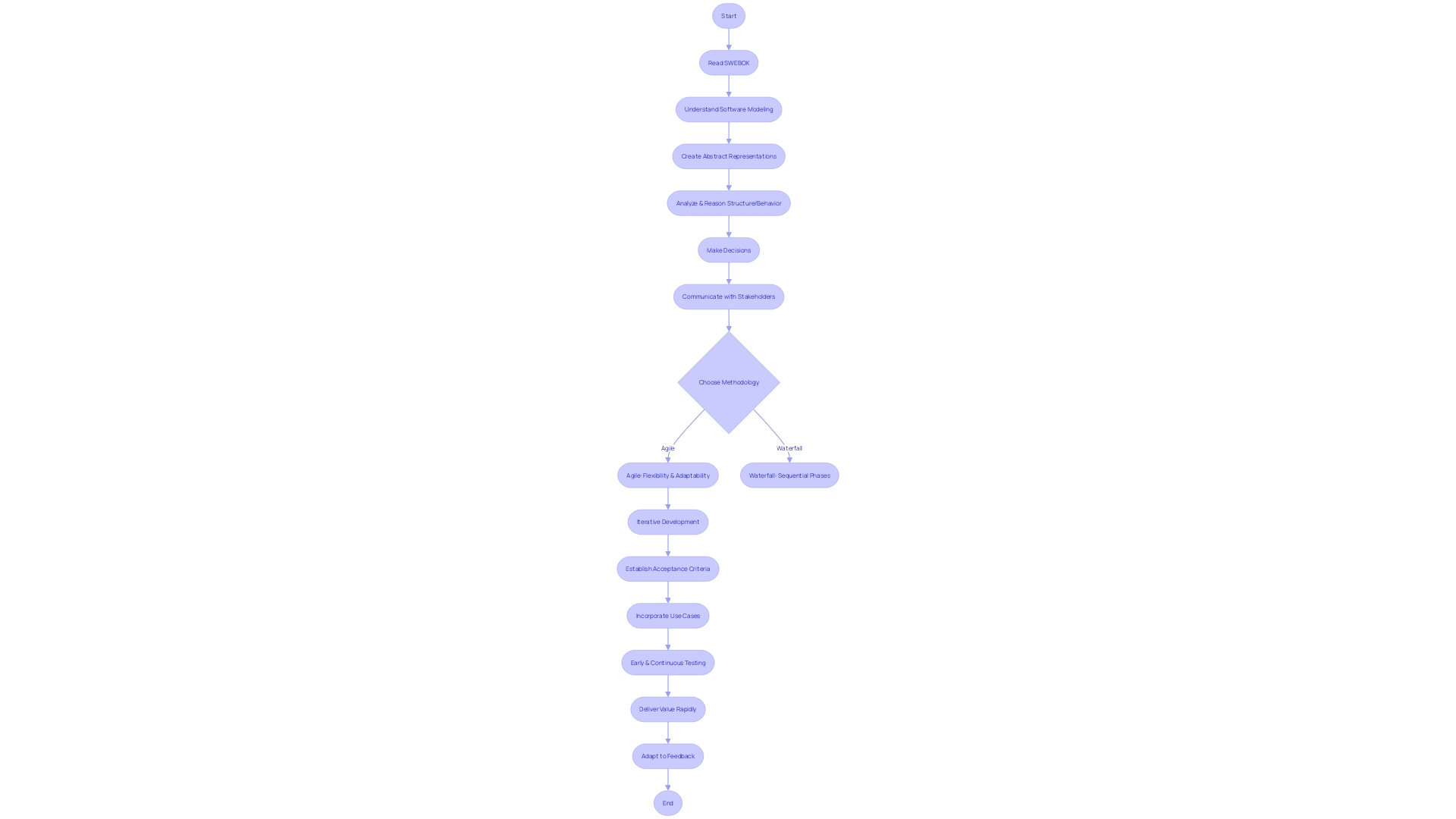
Validation and Testing of Acceptance Criteria
Defining acceptance criteria is a meticulous process, and its subsequent validation and testing are vital to confirm that the software aligns with user expectations. Effective testing of acceptance criteria often encompasses a combination of user acceptance testing (UAT) and automated testing methodologies. UAT serves as the final verification phase to ensure the software meets business requirements and is ready for deployment, involving end-users to validate the functionality in real-world scenarios. In contrast, automated testing, including unit and integration tests, is executed by software tools that perform predefined actions to check the correctness, security, load, and other performance metrics without manual intervention.
Employing test cases is integral to both UAT and automated testing. These are structured documents detailing actions, conditions, and expected results to verify specific features or functions. They include unique identifiers, descriptions, prerequisites, and the sequential steps required to carry out the test. Automated testing further breaks down into unit testing, which scrutinizes the smallest code chunks, and can occur before or after code development, adhering to practices like Test Driven Development (TDD)—where tests are created prior to the actual code.
Recent advances, such as the application of machine learning (ML) models in testing, have revolutionized the way software is validated and verified. ML models can predict outcomes based on data, aiding in the identification of software bugs which are crucial for maintaining software quality. The ML-based approach, when integrated with traditional testing methods, can enhance the detection of software anomalies, thus improving the overall effectiveness of the testing processes.
The significance of thorough software testing cannot be overstated. It provides assurance that the software not only meets the specified requirements but also functions correctly and efficiently, ultimately leading to a robust and reliable software product that satisfies user needs and stands out in the competitive market.
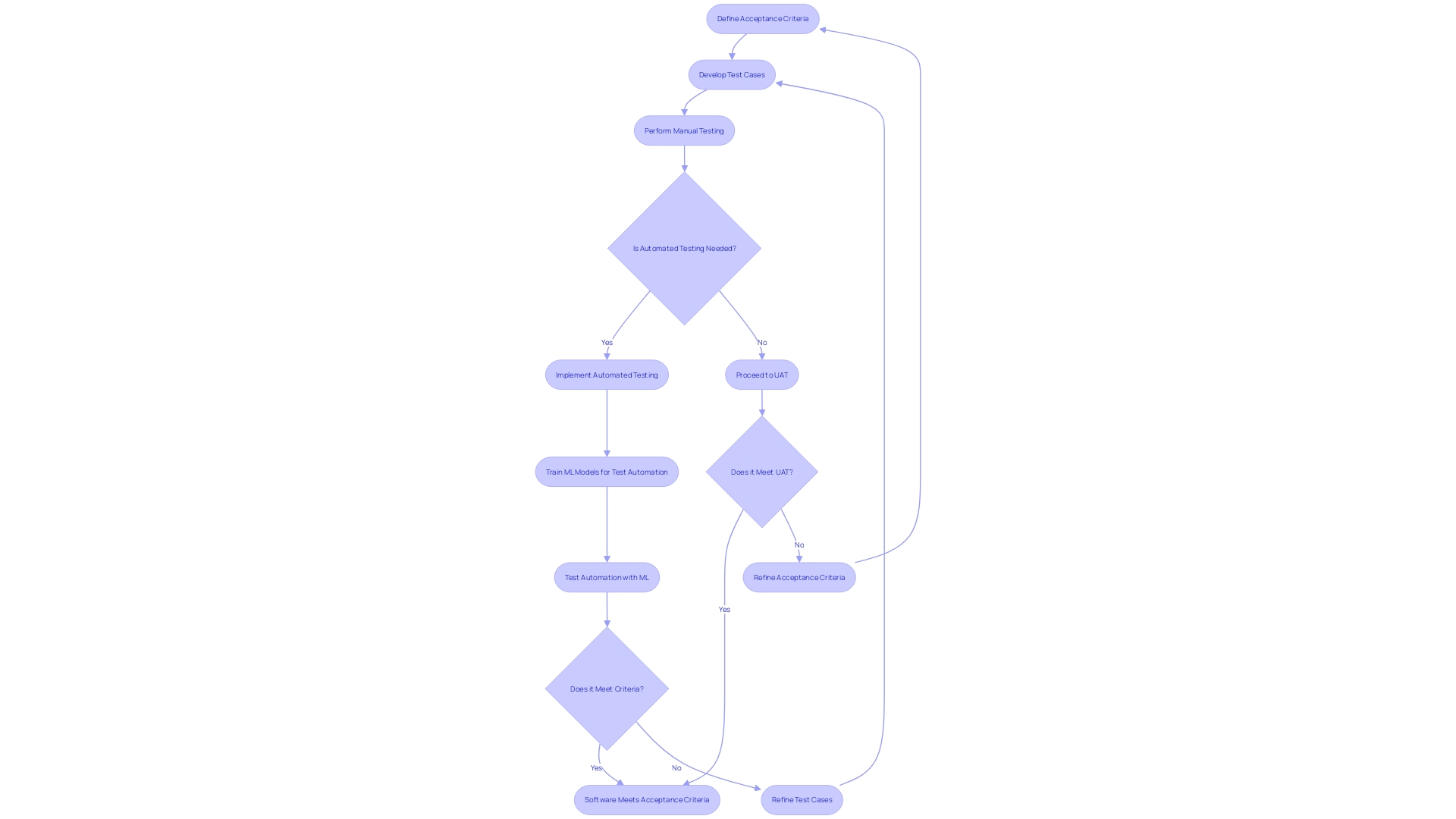
Conclusion
User stories and acceptance criteria are crucial tools in software development, allowing teams to deliver value to end-users. User stories capture requirements and perspectives, while acceptance criteria provide clear completion conditions. By embracing these practices, teams can effectively communicate complex requirements and create user-centric designs.
Understanding user stories involves utilizing use cases, which outline system functionalities. Agile methodologies enhance this approach, promoting adaptability and transparency.
The structure of user stories consists of three elements: the persona, action, and desired outcome. Techniques like "Job Stories" capture specific user situations, motivations, and outcomes.
Well-defined acceptance criteria are critical for determining when a user story is complete. They encapsulate conditions for software acceptance, particularly in Agile methodologies.
Defining clear and effective acceptance criteria guides development teams and ensures software meets specifications. Use cases provide descriptive narratives, and test cases verify functionality and performance.
The INVEST model aligns user stories and acceptance criteria with user acceptance testing and quality assurance. Collaboration and communication between analysts and programmers are crucial in defining effective acceptance criteria.
Validation and testing of acceptance criteria confirm software alignment with user expectations. User acceptance testing and automated testing ensure functionality, correctness, security, and performance.
By implementing these concepts, teams optimize processes and deliver high-quality software exceeding user expectations. User stories and acceptance criteria, along with collaboration and communication, ensure user-centric software aligned with business objectives.
Optimize your software development process and exceed user expectations with our expert solutions.





